Cromer |
|
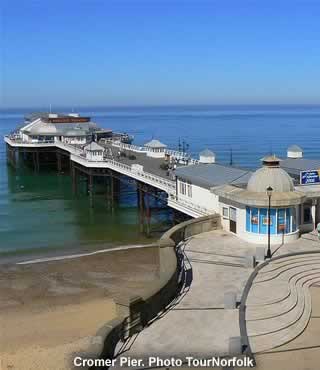 |
|||
A classic Norfolk seaside town, situated on a cliff-top, overlooking fine sandy beaches |
|||||
Listen to this article |
|||||
|
|||||
Cromer is a classic Norfolk seaside town, situated on a cliff-top, overlooking fine sandy beaches. The town has an interesting history, originating around a village called Shipden, that was lost to the sea in the 14th century. |
|||||
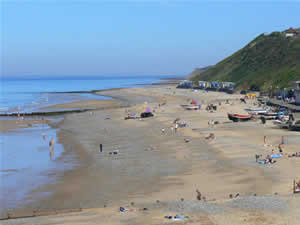 Cromer's Sandy Beach |
|||||
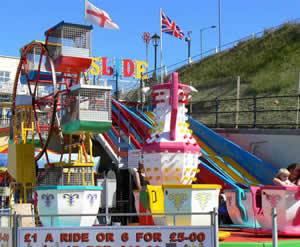 There is a small children's fun fair just behind the beach |
|||||
When the late Victorians developed the railway to Cromer in 1877, it brought significant numbers of people here in search of clean air and fresh breezes. The increase in tourism led to significant development of the town and this is why most of the architecture relates to the late Victorian period. By 1900 Cromer was in many people’s opinion, the most attractive sea front on the East Coast. |
|||||
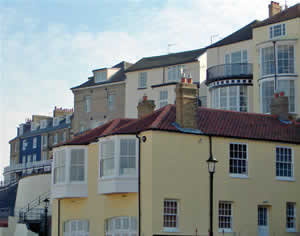 The Victorian Seafront at Cromer |
|||||
Cromer’s streets and alleys are crammed with shops, pubs, restaurants and cafés, and the Cromer Carnival is held every summer, which includes sports, quizzes and events for any age, it is a great event for all the family. |
|||||
 Exploring Cromer's Streets |
|||||
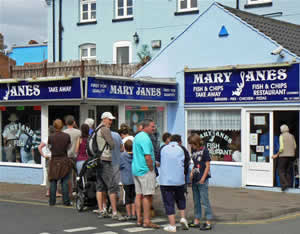 Cromer is a great place to enjoy fresh Fish & Chips |
|||||
|
|||||
One of the longest standing features of Cromer is its pier which has been here in some form since 1391. In 1582 Queen Elizabeth I granted the right to inhabitants of Cromer to export wheat, barley and malt for the maintenance of their town, and towards the building of a proper pier. As various wooden structures were erected, the inevitable happened and the piers were demolished by the power of the sea. Work commenced on the 450 feet (136m) pier in 1900 and it was opened in June the following year. This structure has survived, despite suffering damage on numerous occasions. It houses a lifeboat station and a pavilion theatre, which still stages end of pier shows. |
|||||
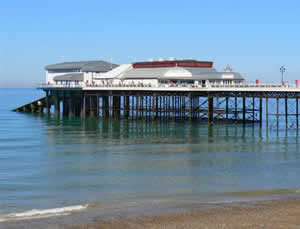 Cromer Pier |
|||||
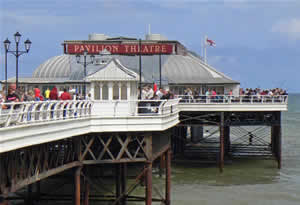 The Pavillion Theatre, staging a regular programme of shows |
|||||
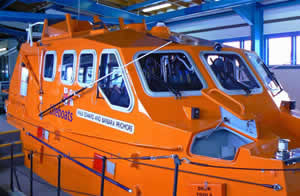 Cromer's Lifeboat, which can usually be viewed in its lifeboat station for free |
|||||
It is Cromer Church however, that dominates the town, as it has the tallest tower in Norfolk at 160 feet giving spectacular views from the top – to which you can climb! In the 17th and 18th centuries however, the church went into decay and part of it collapsed. One local story tells that 4 of the bells were sold off to St Mary's, which houses the famous Bow Bells of Cockney London. Thankfully, starting in 1885, the church was restored; and is now a lovely, peaceful place in the centre of a bustling town. |
|||||
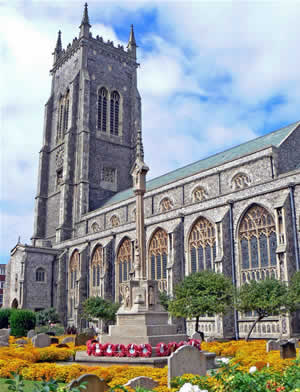 Cromer Church, located right in the centre of the town |
|||||
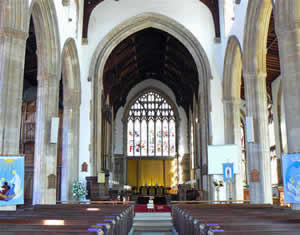 Inside Cromer Church |
|||||
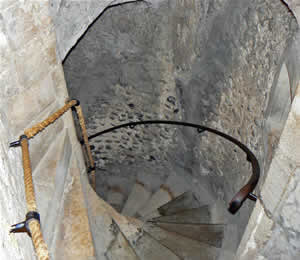 Climbing the 172 steps to the top of the church tower |
|||||
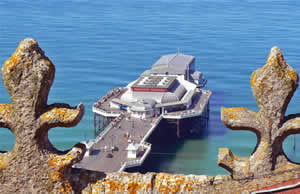 You get spectacular views of the town and coast from the top |
|||||
The fishing industry has declined over the years, but Cromer crabs are still as famous as ever with fishing boats launched from the beach in season, tending to hundreds of crab pots. Cromer crabs are famous for their sweet, tender flesh, and a high proportion of white meat to dark. Norfolk fishermen have harvested this delicacy for centuries, although the number of crab boats operating from Cromer today has fallen to around a dozen. |
|||||
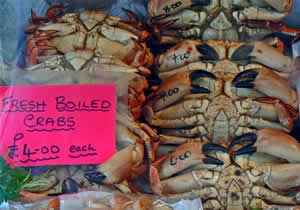 Fresh boiled Cromer Crabs for sale |
|||||
The RNLI Henry Blogg museum illustrates the history of Cromer lifeboats. The Watson class lifeboat HF Bailey, that was captained heroically by Blogg in World War II, is the centrepiece of the museum and features alongside historic photographs, paintings, models and memorabilia. The new exhibition, with children friendly interactive displays, brings the story of the RNLI to life and tells it right up to the present day. |
|||||
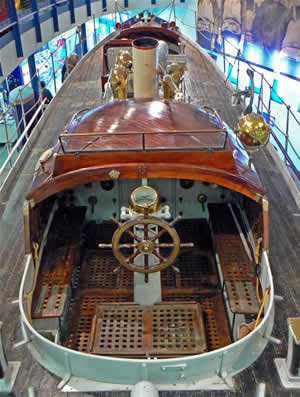 Henry Blogg's Lifeboat on display in the Henry Blogg Museum |
|||||
|
|||||
The Cromer Museum is adjacent to the church, and occupies a row of Victorian fisherman's cottages. It illustrates what it was like to live in Cromer at the end of the 19th Century. This gallery includes Britain's oldest elephant fossil; found at nearby West Runton. |
|||||
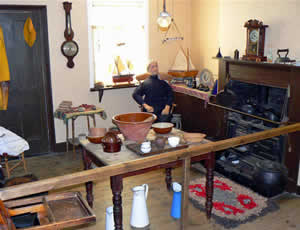 A re-creation of Victorian Cromer in the Cromer Museum |
|||||
|
|||||
|
|||||
Cromer Tourist Information Centre, Prince of Wales Road, Cromer, NR27 9HS. Tel: 0871 200 3071 |
|||||
RNLI Henry Blogg Museum is open daily, February to November, 10am to 5pm (plus weekends in December). Entry is FREE, but donations welcome. The Rocket House, Cromer, NR27 9ET. Tel: 01263 511294 |
|||||
Cromer Museum is open daily, 10am to 5pm (closed Sundays in winter). Entry costs around £3.20 for adults, £2 children. Tucker Street, Cromer, NR27 9HB. Tel: 01263 513543 |
|||||
Car-parking can be found at the end of the West Pavilion Gardens (paid), near the Morrisons Garage. |
|||||
Cromer has a railway station on the Bittern Line, between Norwich and Sheringham. For train times and fares call the Network Rail National Helpline: 08457 11 41 41 |
|||||
|
Pocket Britain is optimised for use on a smartphone or tablet with internet access. All content is subject to copyright. All reasonable methods have been used to ensure information supplied is accurate at the time of publication. However, it is advisable to check information before relying on it. Privacy Policy |